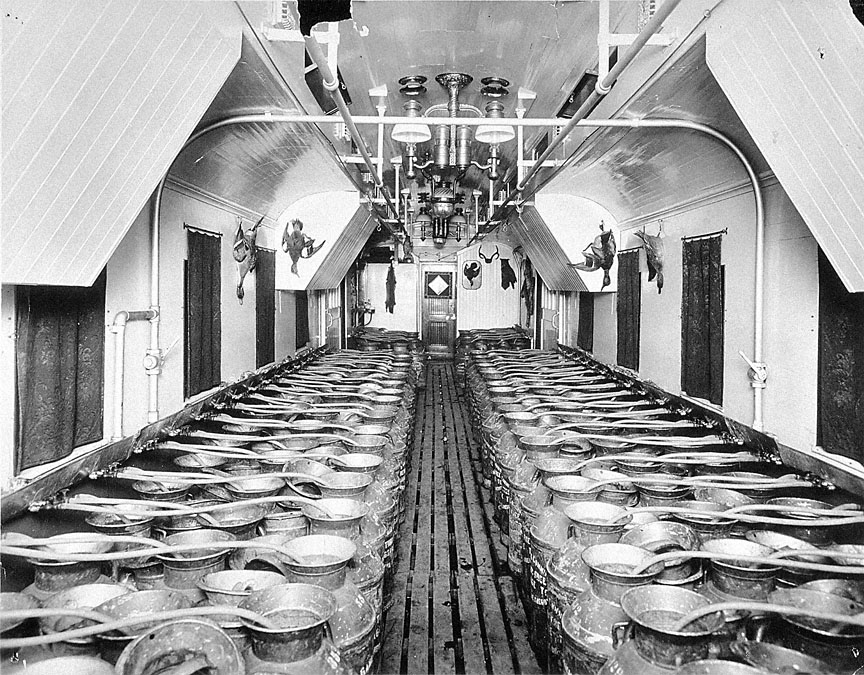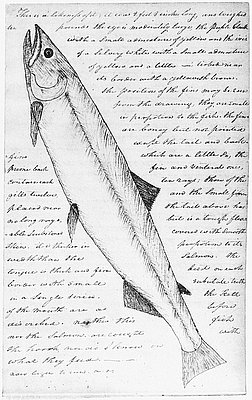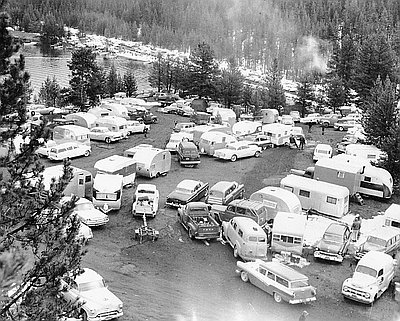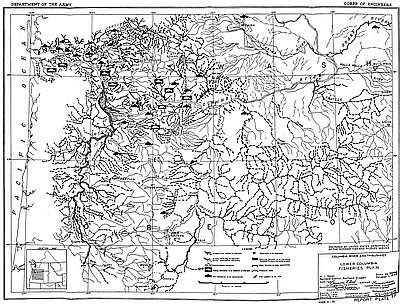This promotional photograph, taken by Angelus Studio, shows the inside of a railroad car used by the Oregon Fish and Game Commission to transport hatchery-raised rainbow trout to rivers, streams, and lakes throughout the state. The car, nicknamed Rainbow, could hold up to 177 cans containing young trout. Air tubes connected to the cans delivered oxygen to the fish. Angelus Studio was a commercial photography business that operated in Portland in the late 19th and early 20th Centuries.
Beginning in the early 1910s, state hatcheries produced millions of rainbow trout fry. They used mules, horses, hikers, trains, and cars to deliver the popular game fish to new and remote locations. Pacific Northwest rainbow trout were also introduced to waterways in many foreign countries. In exchange, non-natives such as the brook trout were introduced in Oregon. In later years, the Oregon Department of Fish and Wildlife used airplanes and helicopters to drop trout fry into waterways.
Rainbow trout, closely related to Pacific Salmon, are native to Oregon and the western United States. However, they have competed with native fish in waterways where they were introduced and some scientists believe that hatchery-bred rainbow trout have cross-bred with native cutthroat trout in Oregons rivers and streams.
Written by Kathy Tucker, © Oregon Historical Society, 2003.



